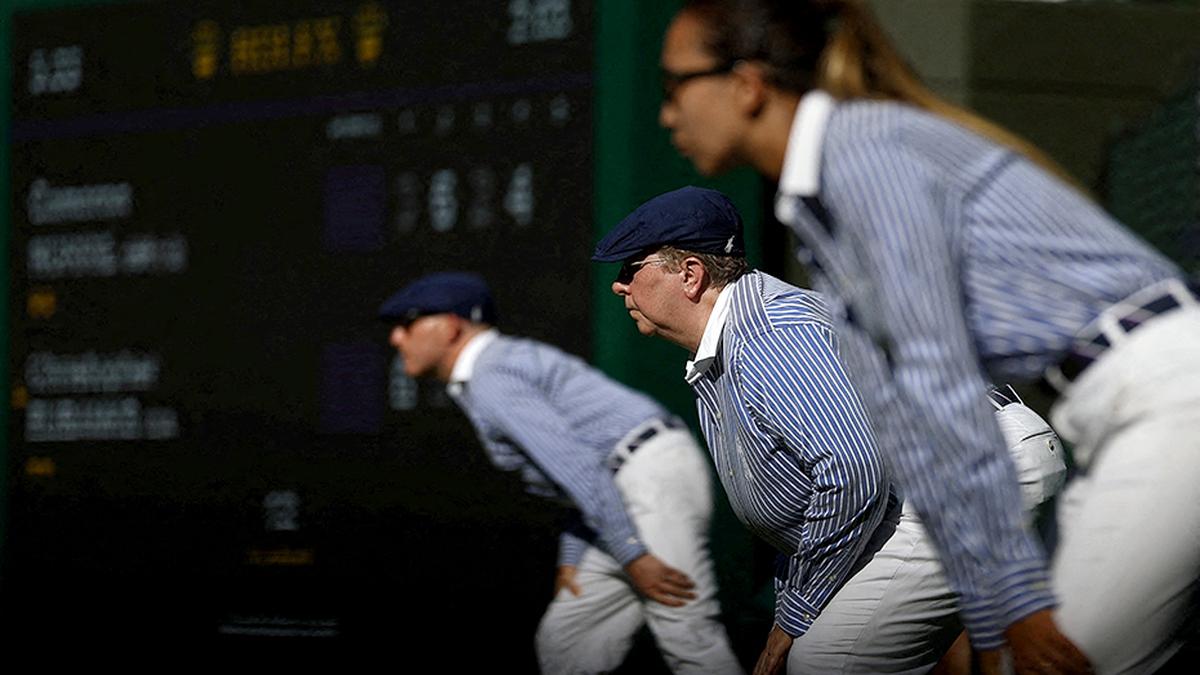Wimbledon is guaranteed to be picture-perfect when it gets under way next week but the courts will never look the same again after the demise of line judges.
For the first time in the tournament’s storied 148-year history, the men and women stationed at the back of the courts, calling “out” and “fault”, will be missing.
The Grand Slam announced in October that it was scrapping its smartly dressed officials in favour of electronic line-calling (ELC) from 2025, following the general trend in tennis.
The Australian Open and the U.S. Open have already gone down this route, leaving the French Open as the only one of the four Grand Slams still to use humans in the role.
Wimbledon is cherished for its traditions, from the white kit worn by players to the strawberries and cream served to fans and the sumptuous flowers that colour the grounds.
But the All England Club must balance that unique heritage with innovation.
Tournament director Jamie Baker emphasised the point in an interview with AFP this week.
“We are very much plugged into the wider tennis ecosystem, the wider tennis industry, on everything that we do,” said the former professional player.
“And this was something that we’ve been talking about for many years, because we could see the way that it was going.
“And as you would imagine, for us, balancing the tradition with innovation is really a thing that we look at in pretty much every single decision we make.”
Baker emphasises that Wimbledon is careful to protect its heritage, including the “untouchable” white clothing rule, which he says is observed more strictly now than two decades ago.
Competition integrity
But the former British number two said the integrity of the competition was the most important element.
“First and foremost for us here, we’ve got to get the competition aspects right, he said. “That’s such an important part of everything.
“And player expectation now, across the professional game at the highest level, is that the lines will be called in this way.”
Baker believes the people who will least notice the change are the players, who are so used to the technology.
Switching to electronic line-calling
The decision to switch to live ELC, which builds on existing ball-tracking and line-calling technology, was made following extensive testing at last year’s Championships.
Since 2007, Hawk-Eye has assisted officials at Wimbledon on certain courts, with players able to challenge a number of calls.
Its introduction added a new element for spectators.
There was a buzz of excitement when the umpire signalled a video replay of a line judge’s decision, followed by rhythmic clapping as it was shown on the big screen.
More than 450 cameras have been installed at Wimbledon and at the qualifying tournament in nearby Roehampton this year, with machines making the decisions previously made by humans.
But around 80 former officials will be employed as match assistants, with two on each court offering support to the umpire, while they will also provide back-up should the electronic system fail.
So does the demise of line judges remove a bit of Wimbledon’s magic?
Baker thinks the opposite.
“I think that’s a massive positive move for us in terms of the actual look and feel of the court and the recognisable Wimbledon brand, which is green grass courts, players wearing white tennis clothes — it’s instantly recognisable,” he said.
“So the more emphasis that’s on that, the better. But also, just if you get back to the very nature of the sport itself, it’s gladiatorial, it’s one-on-one, everything that happens on the stage should be focused around that.”
























